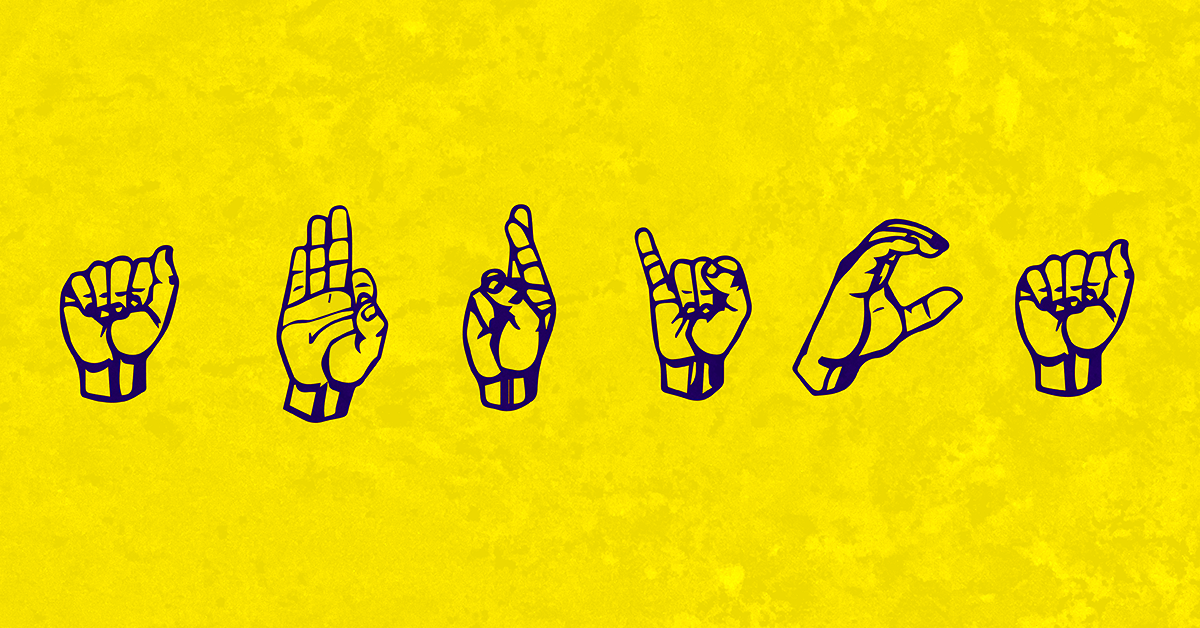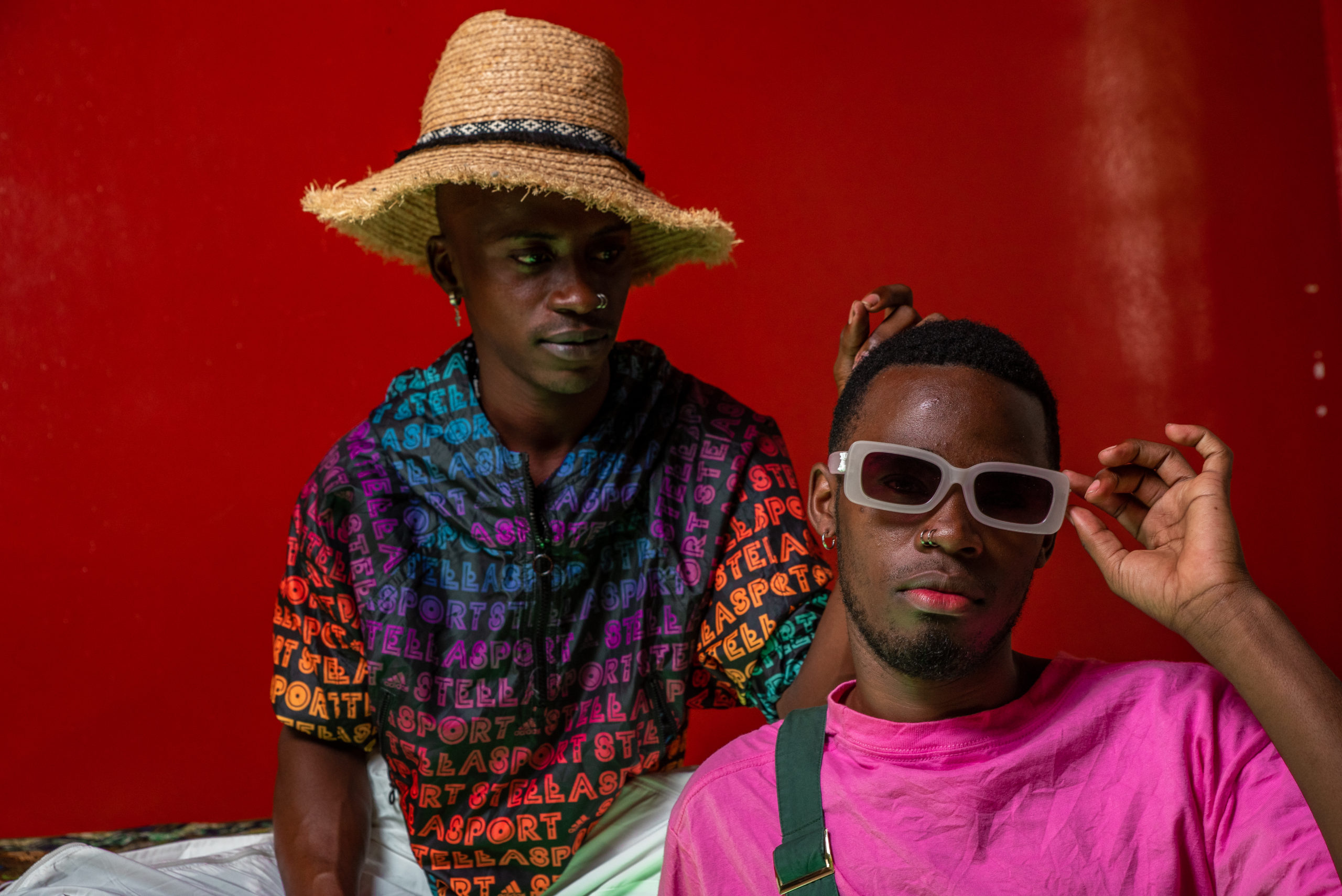“Very few people use it”: Africa’s bumpy road to Sign Language adoption
- South Africa's recognition of Sign language as an official language sets a progressive example, but across the continent, acknowledgement, training, and standards for sign language interpretation remain varied and insufficient even in countries where Sign language is officially recognised.

Harare, Zimbabwe (Minority Africa) — For 29-year-old Tapiwa Chishaka who was born deaf, his days follow the same routine. From sunrise to sunset, he walks from one bus to another on the highway, sharing laminated copies of a letter stating the bearer is deaf and therefore seeking any form of help.
He is often met with different reactions– from sympathetic to cold, and sometimes even harsh – by the bus crews and passengers. But at the end of the day, he gets something to take home.
In April 2020, Chishaka could no longer go out and could not understand why. The COVID-19 lockdown had begun, and in the ensuing panic and confusion, neither his mother nor community members could explain that the whole country had been put under a total lockdown to control the spread of the deadly virus.
“As much as my ‘signing’ is very poor, the real problem was less about how to tell him than what actually to tell him, I also did not understand what was happening,” Shorai, Chishaka’s mother, says. “He could tell that something unusual was happening, but he could not understand, and I could not explain it. Had he been to school, his life could have been much easier.”
A 48-year-old widow, Shorai, a roadside vendor, raised her son in Epworth, a shanty town on the outskirts of Harare, Zimbabwe, where no special schools for the deaf and hard of hearing exist. As such, Chishaka cannot read or write, even the all-important letter he carries around.
Chishaka is one of the about 300,000 Zimbabweans who exist on the margins because they are either deaf or hard of hearing. Of these, only 73,000 can effectively communicate with sign language.
40 million deaf people in Africa
The World Federation of the Deaf (WFD) set September as Deaf Awareness Month, with September 23 as the International Day of Sign Languages. This year’s celebration was done under the theme, “A world where deaf people everywhere can sign anywhere!” as the world highlighted the unity generated by sign languages.
Sign language is mostly used by deaf people, who themselves are a minority of many national populations. Most deaf people live largely in conditions of both physical and social isolation. Of the more than 70 million deaf people worldwide, a 2021 report by the World Health Organisation (WHO) says about 40 million are found in Africa.
This year’s celebration was marked shortly after South Africa made sign language the country’s 12th official language, becoming the fourth country in Africa to do so, after Kenya, Uganda and Zimbabwe.
Still, Chishaka, a citizen of Zimbabwe that has long included sign language as one of its 16 official languages since 2013, remains in the dark about key information like the COVID-19 outbreak. For people like him in other African countries where there is no legal recognition of sign language, access to such key information is harder.
“Sign language is not available to people who are deaf and hard of hearing due to stigmatisation and lack of proper implementation of policies that enforce the operationalisation of Zimbabwean Sign language in all sectors,” says Barbra Nyangairi, the executive director of Deaf Zimbabwe Trust.
The Trust faces a lot of challenges in ensuring the widespread use of sign language in the country, among which are the lack of deaf role models who use the language, lack of political will, absence of deaf people in decision-making positions, general ignorance, and resistance due to cultural beliefs.
It is the same in other parts of the continent. Of the 2.7 million deaf people in Kenya, only very few are conversant in sign language, the country’s third official language, after English and Swahili.
Eunice Mboya, the programmes director for Kenya National Association of the Deaf (KNAD) said community members, especially at the village level, have not embraced sign language.
“More often than not, you will find even families of deaf children don’t know sign language. This therefore deprives [deaf people] from accessing information at the community level,” Mboya tells Minority Africa.
She said the recognition of sign language as an official language gives the deaf community an equal communication ground, thus demystifying the assumption of the superiority of spoken language over sign language.
“The challenge Kenya is currently facing is implementing the constitutional provision on matters of Sign language,” Mboya adds. “Whereas the Constitution stipulates access to information for deaf people, many important documents are still inaccessible, and none has been translated to sign language, including the Constitution and the People with Disability Act. This therefore limits access to these important documents by deaf people.”
The executive director of Ghana National Association of the Deaf (GNAD), Juventus Duorinaah, tells Minority Africa that while sign language is widely available, only a few people use it.
“Despite people knowing that a language called sign language, like other Ghanaian languages, exists, it is used by people with various degrees of hearing impairment, very few percentages of the hearing populace use it,” he says. “This includes Sign language interpreters, parents and families of deaf children, teachers of the deaf and some close friends.”
What can be done to improve the use of Sign Language?
Even in South Africa, the most progressive country in terms of including deaf people– with 43 schools and one tertiary institution available to serve its 4 million deaf population – only 600,000 can use sign language.
Theodorus du Plessis, a Professor Emeritus in the Department of South African Sign Language and Deaf Studies at the University of the Free State (UFS) explained that international experts give three reasons why the officialisation of countries’ national Sign languages is significant.
The first is that it can help to ensure that deaf people have access to education, employment, and other services in their “own language.” The second one is that it can promote the use of sign languages in general and also help to preserve the languages, and lastly, it can raise awareness about deaf culture and the contributions of the deaf, professor du Plessis explains.
“All three reasons also bring us to the important issue of inclusivity,” said Professor du Plessis, who described the development as “a bold step.” “Education, in particular, plays an important role in this. To date, the Schools Act has been enforced in such a way that South African Sign Language (SASL) has mainly been taught in deaf schools as a home language, while the law stipulates that it applies to all public schools.
“More importantly, a curriculum must now be developed so that the language can also be taught as a first and second additional language in all schools. Such a thing would give inclusivity an enormous jolt.”
Most African education systems lack skilled and fluent sign language teachers and learning resources. This affects the teaching and learning of deaf learners. Most deaf learners go to school without establishing any language as their home language. This implies they do not have a way of dealing with sign language barriers during the teaching and learning process.
Need for training, standards and guidelines
For the ideal of having “A world where deaf people everywhere can sign anywhere!” come true, experts say one hurdle has to be overcome, which is the plethora of sign languages. There are more than 300 sign languages in the world, with about 45 of them being found in Africa alone. This has resulted in cases where the deaf are unable to effectively communicate even between themselves. This has led some researchers to suggest that there be some form of “standardisation” of the sign languages.
Duorinaah reveals that in Ghana, the language that is commonly used is Ghana Sign Language (GhSL), but there are various other localised versions resulting in difficulties in understanding. There are about 500,000 deaf people in the West African nation.
“In Ghana, sign language is not a single language. There are few varieties,” he says. “For example, there is the Sign language used by a small community of deaf people at Adamorobe in the Eastern region of Ghana, popularly known as Adamorobe Sign language (AdaSL).”
“Research has also shown that another form of Sign language is used by a small community in the Western region, which is different from the GhSL. There is a high level of difficulty in understanding either language. Also, some vocabularies for the general GhSL vary considerably from place to place,” he explains.
“For example, the sign for a local food, “kenkey”, in the South differs from that of the Northern region. However, with its features similar to American Sign Language (ASL), users of GhSL do not have many difficulties as it’s rather widespread in the country.”
However, the World Federation of the Deaf is opposed to any attempts to “standardise” sign languages pointing out that this may have negative effects on some of the languages.
“In the spirit of the CRPD (United Nations Convention on the Rights of Persons with Disabilities), Sign languages should be promoted in the form that they are used by deaf Communities around the world,” the federation pointed out. “Often, language standardisation takes the form of deciding on one single word or one sign for a concept and as a result, the natural variation of the language is ignored.”
Mboya opines there is a need for common guidelines, especially on sign language training and interpretation.
“There is also a need for African countries to borrow a leaf from other countries that have recognised sign language since no country is an island of its own,” he says.“Another problem is with sign language interpretation services. We currently don’t have any regulations guiding on training, qualifications or licensing. This therefore gives leeway for mushrooming sign language training institutions and poor quality interpreters.”
Edited/Reviewed by Banjoko Samuel, Uzoma Ihejirika, and Caleb Okereke




